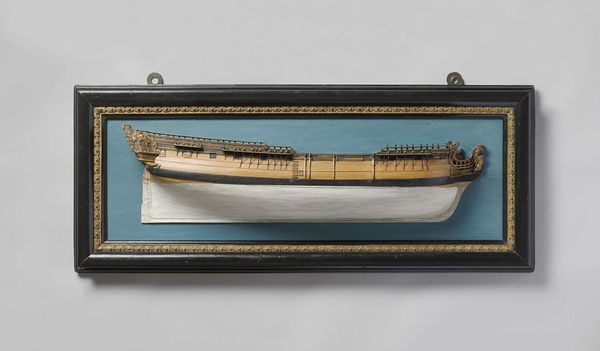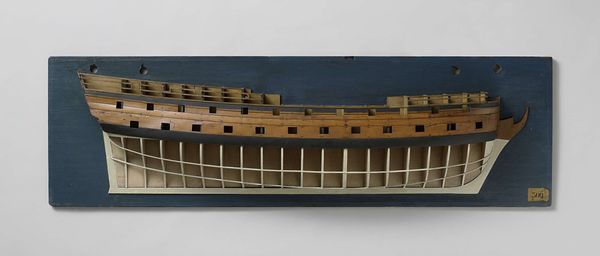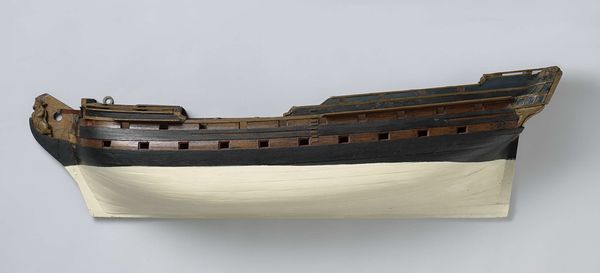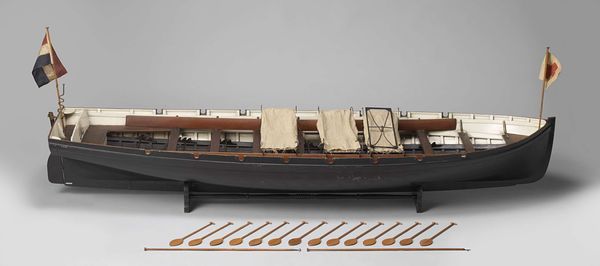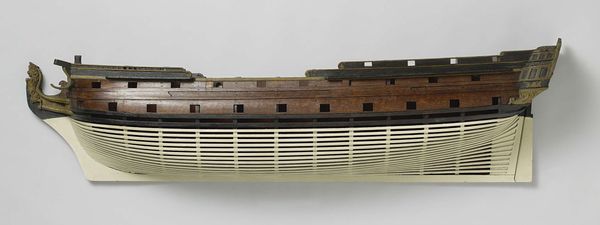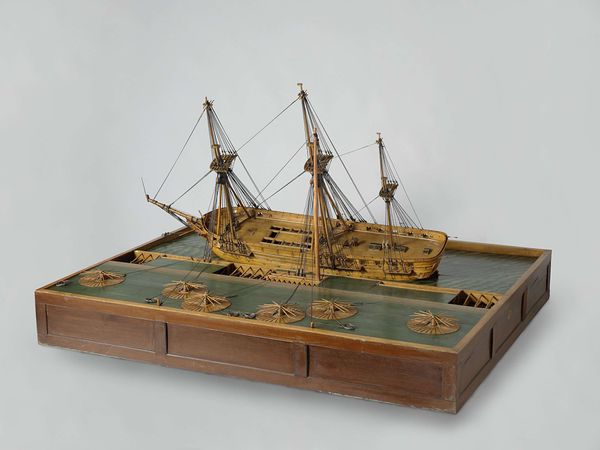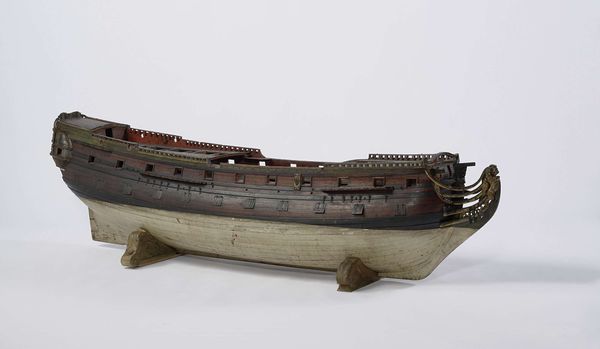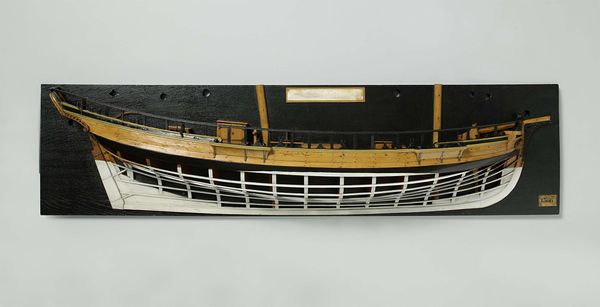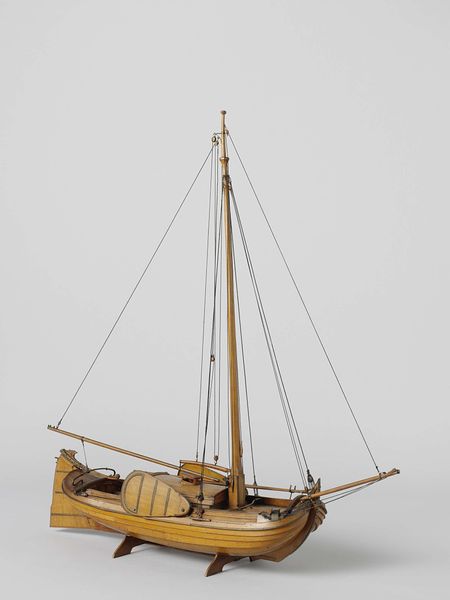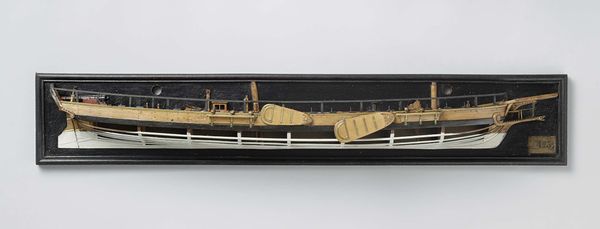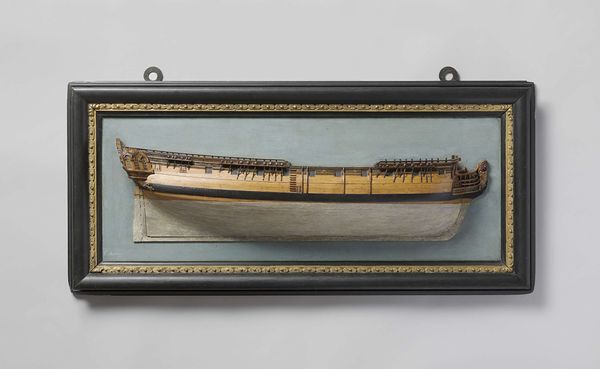
Dimensions: height 48.3 cm, height 49.2 cm, width 102.5 cm, thickness 3.4 cm, depth 12.8 cm
Copyright: Rijks Museum: Open Domain
Editor: We're looking at the "Half Model of a 24-Gun Frigate," created in 1768. It's a wooden sculpture and the detail is quite stunning. It's like a whisper from a time when naval power ruled the seas, though this seems more design than destroyer. What strikes you when you look at it? Curator: Oh, that’s lovely. I see a shipbuilder’s dream, really! You know, before computer-aided design, these half-models were crucial. It's Baroque-era swagger meets practical seafaring. Look how the light catches those curves; the craftsman clearly adored the physics of the ocean. Does it feel like a frozen explosion of potential to you, too? Editor: A frozen explosion… I like that. It also makes me think about trade, the exchange of things…but also power. Were these models just about design, or were they symbols too? Curator: Definitely both! Think about it – shipbuilding was a major industry, closely tied to national ambition. A model like this wasn't just for the builders; it might have been presented to a patron, a noble, a king. The embellishments, though subtle, are a nod to wealth and authority. It's like saying, "Behold, our naval prowess, distilled into this elegant form." A three-dimensional power ballad. Editor: That's a great analogy. The attention to detail is incredible. It does speak to craftsmanship, naval strategy, even artistry. Something that began as one thing morphs into something greater. Thank you. Curator: And thank you! Seeing history through these meticulously crafted objects always feels so incredibly personal. A little like time travel.
Comments
No comments
Be the first to comment and join the conversation on the ultimate creative platform.

